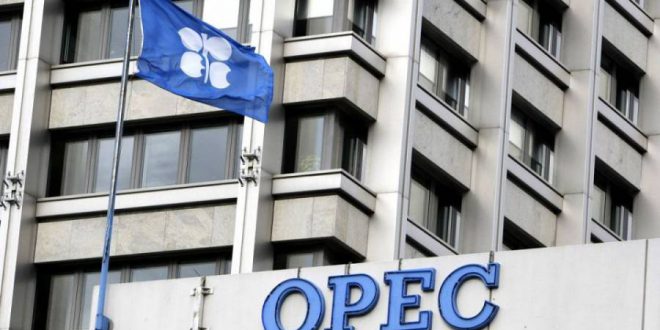Russian Oil Minister Alexander Novak on Tuesday told reporters that his country and Saudi Arabia had in July discussed an extension of the current deal between the Organization of the Petroleum Exporting Countries (OPEC) and non-OPEC producers to cut production.
There is no final decision on an extension to the deal beyond its expiry in March 2018. and the idea is still just an “option.“ Novak said.
Novak is the second top Russian official to have flirted with the idea of an extension to the deal in the first five days of this month. “The most likely outcome is that the deal will be extended.“ Russia’s Deputy Prime Minister Arkady Dvorkovich said in an interview with Bloomberg TV in Cernobbio. Italy on Sep. 2. Yet he stated that this will be concluded in the next ministerial meeting of OPEC and non-OPEC members on Nov. 30.
Not only have Russian officials discussed this issue over the past five days. but two OPEC oil ministers — from Iraq and Iran — have said almost the same thing. Phrases such as “all options on the table“ and “we will discuss it on Nov. 30 and come out with a decision if there is a need“ are becoming the main lines repeated by almost every OPEC minister.
So is extending the deal just an “option“ or will it happen? Based on what we know today. it is safe to say that OPEC and non-OPEC members will likely extend the deal in November. There are several factors that support this likely outcome.
First. there are still high oil inventories. while compliance with the deal is still not reaching 100 percent. According to most analysts. oil inventories in the Organisation for Economic Co-operation and Development (OECD) are between 200 and 250 million barrels above their five-year average as of June. OPEC’s own estimates put that at 253 million barrels. according to the August monthly oil report from the organization.
Assuming that OPEC’s assessment was correct. then OPEC and non-OPEC members need to cut production by at least 1.4 million barrels per day (bpd) for the next six months to lower the stocks to the five-year average level. The compliance of all producers was at 94 percent in July. according to OPEC. This means that they are cutting only 1.69 million bpd of the required 1.8 million bpd. This would be good enough if Libya and Nigeria. two OPEC countries exempted from the deal. had not raised their production collectively by almost 1 million bpd in the last two months.
Russian officials are upset by this development and they have asked OPEC bluntly and publicly to find a solution to accommodate rising production from Libya and Nigeria.
OPEC cannot force Libya and Nigeria to cut and it cannot go beyond the 1.2 million bpd agreed upon in the deal. Taking shale-oil production into account. it is clear that a rebalancing of the market will not happen this year. Producers are now expecting a rebalancing to happen in the first quarter of 2018. probably by March when the deal expires.
The second factor is that. even if OPEC managed (through a miracle) to raise compliance to 100 percent — despite the official announcement of Ecuador that it will not abide by its quota — Tropical Storm Harvey will complicate the matter for them. Due to shutdowns in refineries in affected areas. crude inventories are expected to rise by 40 million barrels. according to Bank of America’s estimates. This will delay OPEC’s efforts for another month at least.
Third. OPEC and non-OPEC members need a floor for oil prices and the deal is providing this. They have realized that they cannot achieve the target oil price of $50-$60. which some ministers have hinted at this year. The Angolan oil minister has said that $60 is vital for his country. and some analysts have suggested that this target can be achieved by the end of the year. However. many realize that the deal is only able to put a floor of $45-$50 to oil prices. and that the ceiling is up to the market. Oil prices have been capped at $53 since late July. due mainly to rising shale production. Any increase above that means that more supplies from the US will flood the market. So keeping the deal will at least ensure that oil prices will not fall below $45-$50. And as long as there is shale oil. the production-cuts deal is needed to protect producers from falling prices.
Ministers of the Joint Ministerial Monitoring Committee (JMMC) hinted at an extension of the cuts deal in its July meeting in Russia. “The JMMC … recommended keeping the extension of the Declaration of Cooperation beyond (the first quarter of 2018) as an option should further action be required for the stabilization of the market.“ it said. Unless a miracle happens and fundamentals change miraculously. an extension is a must and not just an “option.“

 Iran Energy News Oil, Gas, Petrochemical and Energy Field Specialized Channel
Iran Energy News Oil, Gas, Petrochemical and Energy Field Specialized Channel



